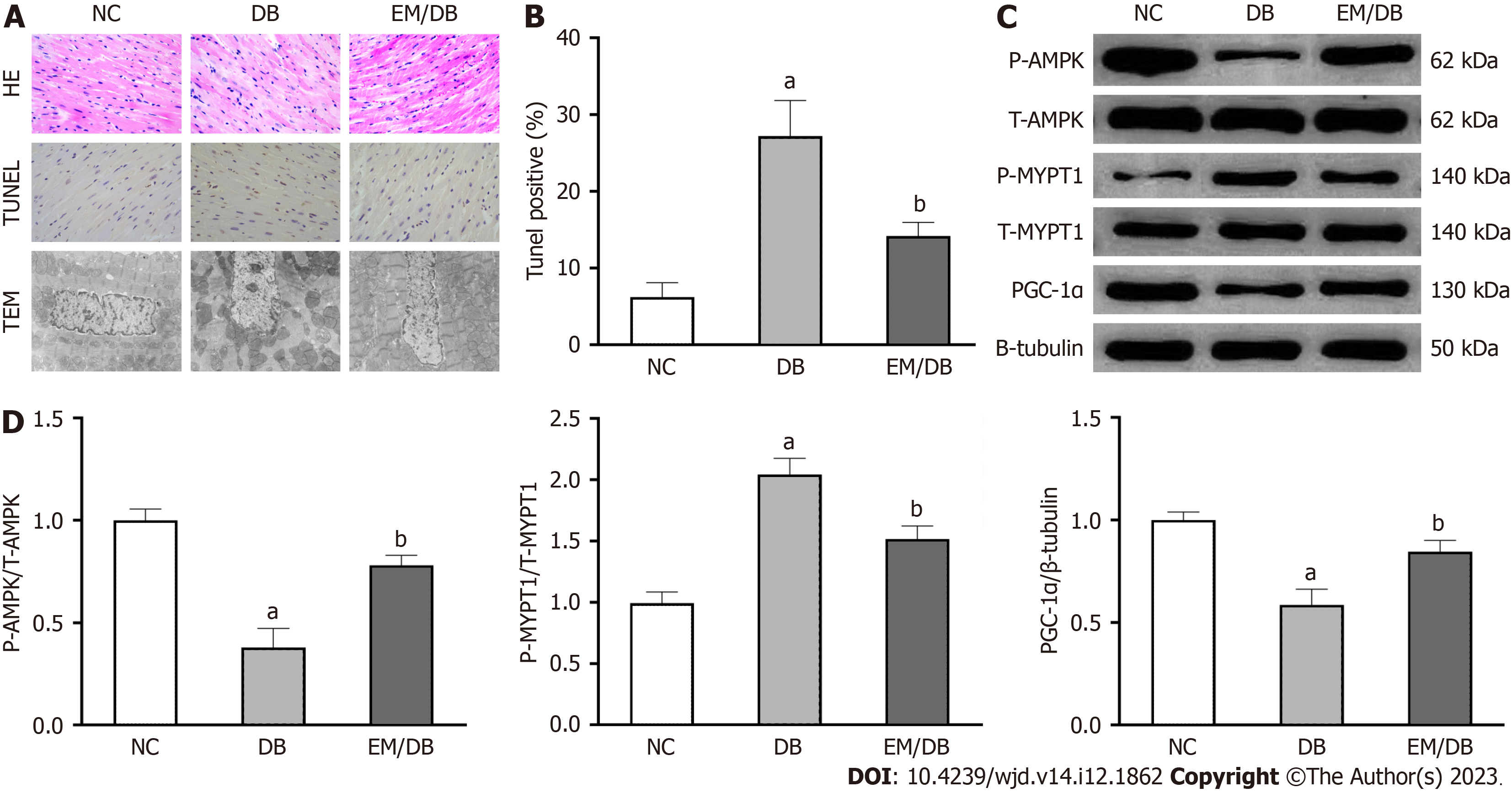Copyright
©The Author(s) 2023.
World J Diabetes. Dec 15, 2023; 14(12): 1862-1876
Published online Dec 15, 2023. doi: 10.4239/wjd.v14.i12.1862
Published online Dec 15, 2023. doi: 10.4239/wjd.v14.i12.1862
Figure 2 Effects of empagliflozin on mitochondrial injury, apoptosis, and AMP-activated protein kinase, peroxisome proliferator-activated receptor-γ coactivator-1α, and the RhoA/ROCK pathway in db/db mice.
A: Left ventricular sections stained with hematoxylin and eosin and by TdT-mediated dUTP-biotin nick end labeling to assess cardiomyocyte apoptosis: The nuclei of normal cardiomyocytes were blue while the nuclei of apoptosis-positive cardiomyocytes were brown. Transmission electron micrographs showed the effects of empagliflozin on the ultrastructure of the myocardium in db/db mice; B: Quantitation of apoptotic cells; C and D: The phosphorylation of AMP-activated protein kinase and myosin phosphatase target subunit 1, as well as the protein expression of peroxisome proliferator-activated receptor-γ coactivator-1α were measured by Western blot in three groups. Bars indicate the mean ± SD from three independent experiments (n = 3). β-tubulin was set as a control for normalization. NC: Normal control mice; DB: Db/db mice; EM/DB: Db/db mice treated with empagliflozin; HE: Hematoxylin and eosin; TEM: Transmission electron micrographs; p-AMPK: Phosphorylated AMP-activated protein kinase; p-MYPT1: Phosphorylated myosin phosphatase target subunit 1; TUNEL: TdT-mediated dUTP-biotin nick end labeling. aP < 0.05 vs NC; bP < 0.05 vs DB.
- Citation: Li N, Zhu QX, Li GZ, Wang T, Zhou H. Empagliflozin ameliorates diabetic cardiomyopathy probably via activating AMPK/PGC-1α and inhibiting the RhoA/ROCK pathway. World J Diabetes 2023; 14(12): 1862-1876
- URL: https://www.wjgnet.com/1948-9358/full/v14/i12/1862.htm
- DOI: https://dx.doi.org/10.4239/wjd.v14.i12.1862









